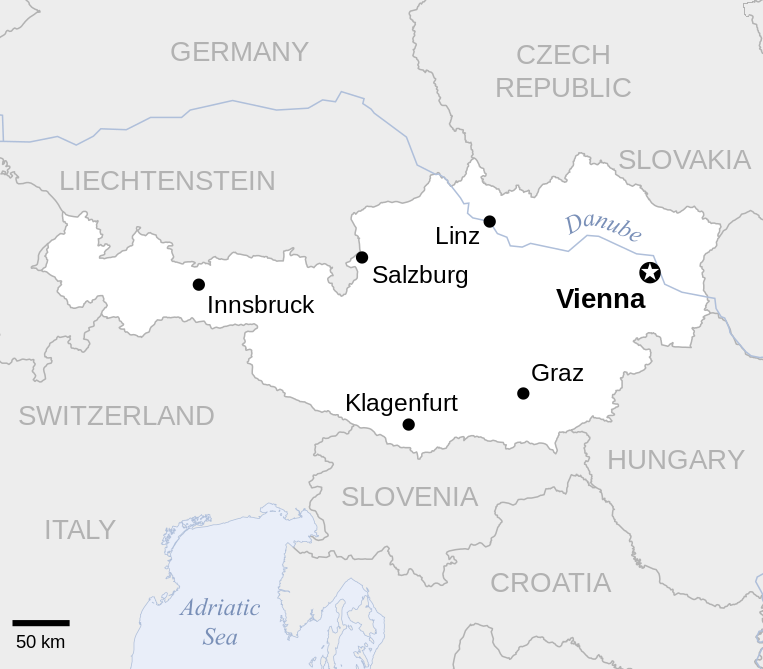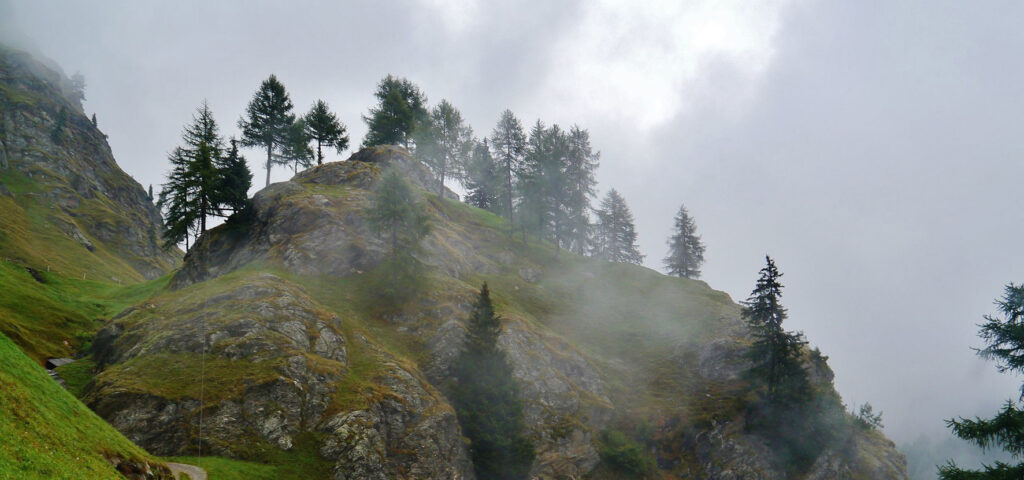The Treaty of St Germain. If you are in the least bit familiar with how WW2 came to a head, then you are also aware of the hardships countries such as Germany, Austria and Italy experienced during the interwar period (1919-1938). Europe was in economic and political chaos after WW1, and out of desperation, comes the need for invention. Or at least adaptation.

Enter the smuggler’s way. Though certainly not a new enterprise in 1920 for those living along the borders where—let’s say—greener grasses grew but with customs taxes on top, smuggling became one of the most common means for gaining extra “income”. Whether with cash or with goods, inaccessible items could then be exchanged for the otherwise unaffordable necessities back on the other side.
According to historians, the illegal transport of goods began as early as the late 18th century, when some areas were deprived of their previous duty-free status. Everything was game: butter, leather and cheese from Austrian provinces such as Tyrol and Vorarlberg, both with borders to Switzerland, were traded for coffee, rice, flour, and stockings. To the north, the same game was played with Bavaria.
Gebhard Walter, a local chronicler from Galtür explained to the Tiroler Tageszeitung Online that “smugglers first smuggled saccharin from Samnaun (Switzerland) along certain routes” because saccharin was lighter than sugar and could be exchanged like hard currency for a lot of different goods. Another historian claimed that, for example, Vorarlbergers crossing over into Switzerland, would trade textiles for flour or chickens and, she said, “sometimes they would just sneak over for love!”

The smugglers did not just step over some invisible line, however, pick up a package, stuff it into their backpack and go home. Though the border between Austria and Switzerland along the Rhine Valley hardly contains a hill to climb over and thus would be too easy for customs guards to spot them, smugglers created routes over mountain passes, which they traversed in the dark, and in all kinds of weather. In other words, beyond escaping the border guards’ notice, smugglers had to be prepared to risk their lives to the elements and terrain. Especially in winter, avalanches became a deadly trap.
In 2017, the docu-drama, “Vorarlberg – Tor zum Westen” (Vorarlberg, the Gate to the West) produced by Reinhold Bilgeri and Markus Barnay, aired on Austria’s national TV station. The story is about two brothers, who started out smuggling meat and cheese in exchange for coffee and other goods, but their jobs are impacted by a political twist. In 1919, Vorarlberg voted to join Switzerland and leave Austria. The Treaty of St. Germain prevented this from happening in the end but the damage had been done. Dissenters began organizing before the NSDAP had become popular amongst the masses. The brothers realized that times “they were a changin’”.
During WW2, the smuggler’s routes all along the Swiss-Austrian and Swiss-Italian borders became escape passages for Jews fleeing from Nazi and Fascist-implemented persecution. These experienced mountaineers—these same smugglers—were no longer only transporting goods for trade, but were helping people to escape. And some, sadly, as depicted in Bilgeri’s and Barnay’s documentary, led them straight into the hands of NSDAP border patrols in exchange for gold, jewellery and whatever else they demanded from their victims as payment up front. There were even cases of smugglers helping fleeing Nazis to escape along those same routes after WW2. All for a pretty penny, I suppose…
Customs officials were assigned on both sides of a border and had to often use skis as a means of catching smugglers in late autumn to early summer. Those who were posted on these patrols and did not come from local mountainous areas, were called “grass sliders” as they did not know how to cross-country or downhill ski well enough to successfully catch the smugglers. The locals from these mountain villages had practically been born on skis and could outsmart, outride, and outski the “grass-sliders” blindfolded.
And what was the punishment if you were caught smuggling goods? Smuggling Jews got you shot, that is for certain. Smuggling goods could as well. It was rare, but not unheard of. Usually jail time was all that it entailed or an extortionate fine, which meant lost income—either way—for the smuggler’s family. (Oh, yes. Women did this, too. Did I forget to mention that? In skirts, for heaven’s sake.) Plank further reports that smuggling, which continued long after the war, turned into an activity “just for kicks” by the 70s, and constituted jail time in Innsbruck for approximately three weeks if you were caught.
Tourism has since taken an enterprising advantage of the smugglers’ nostalgia by introducing visitors to hiking and skiing circuits all around Tyrol and the Dolomites in Italy. For example, Ischgl, near Samnaun, offers skiers a gold, silver, and bronze skiing route along purported historical smuggler paths. There are accessible paths between Tyrol and Bavaria, Tyrol and Italy, and Vorarlberg’s Montafon region (where Hemingway used to write and take ski holidays) and Switzerland.
I’ve put the links below for your perusal should you ever come visiting my way.
For more about the “Reschen Valley” historical background, read
As I was doing research for the Reschen Valley series in its infancy, one of my sources asked whether I was going to have any smugglers in my story. I said no, as it had never crossed my mind or my desk for that matter.
“But you have to write about smugglers,” he cried. “If you’re going to write anything about Tyrol, you must include a smuggler!”
I was nonplussed. I hung up the phone with him after the rest of my interview and had a think about it. Then, bam! Like lightening, I knew where I could build a smuggler in. In No Man’s Land, one of my protagonists is also very resourceful and uses her connections to pass messages back and forth over the new Italian-Austrian border. And her “lost” husband is discovered again, working as a smuggler.
Last year, I decided to take that relatively minor character and write his story to find out what had created the character in the first place. But I had to do the research before I wrote. And one of the things I had to figure out was, “What is my character smuggling?” My husband came up with that one. “Make it tobacco,” he said. Not very original, I thought. And besides, from where would anyone in Austria be smuggling tobacco? To my great surprise, and delight, I found this article on the history of paper cigarettes in Austria and how the industry was a monarchy-regulated monopoly. Austria had even once had tobacco plantations in certain parts of the country! To top that off, I learned that an Italian manufacturer had to be relocated to Linz, Austria during WW1 when their factory was bombed out… I could not believe my luck! Writing The Smuggler of Reschen Pass was an amazingly rewarding experience. I learned so many things I’d have otherwise not have looked for to discover. It will be available in audiobook format within the entire Reschen Valley Season 1 box set in summer 2019!
For more about the “Reschen Valley” historical background, read
For Hiking and Skiing Trails Along Smuggler’s Routes
Get the Box Set Season 1: 1920 – 1924




463
December 1, 2022 - 3:59 am ·Helloo there, just became aware of yourr blog hrough Google, and found thaqt
it iss really informative. I’m gopnna watcfh out for
brussels. I’ll be grateful if you continue thiis in future.
Many people will be bbenefited from your writing. Cheers!
Chrystyna
January 21, 2023 - 1:41 pm ·Thank you so much! Very glad you found me and enjoy the writing!